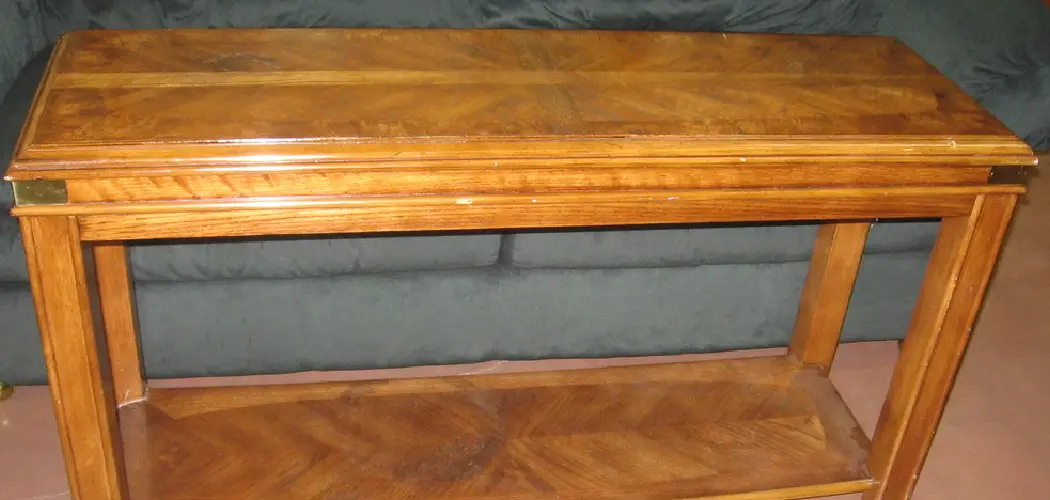Building a sofa table is a rewarding DIY project that can enhance the functionality and aesthetic of your living space. Perfect for displaying decor or storing essentials, a sofa table sits behind a couch, providing additional space without intruding on the room’s layout. Whether you’re a seasoned woodworker or a beginner looking to try your hand at woodworking, crafting a custom sofa table allows you to match your personal style and meet your specific needs.
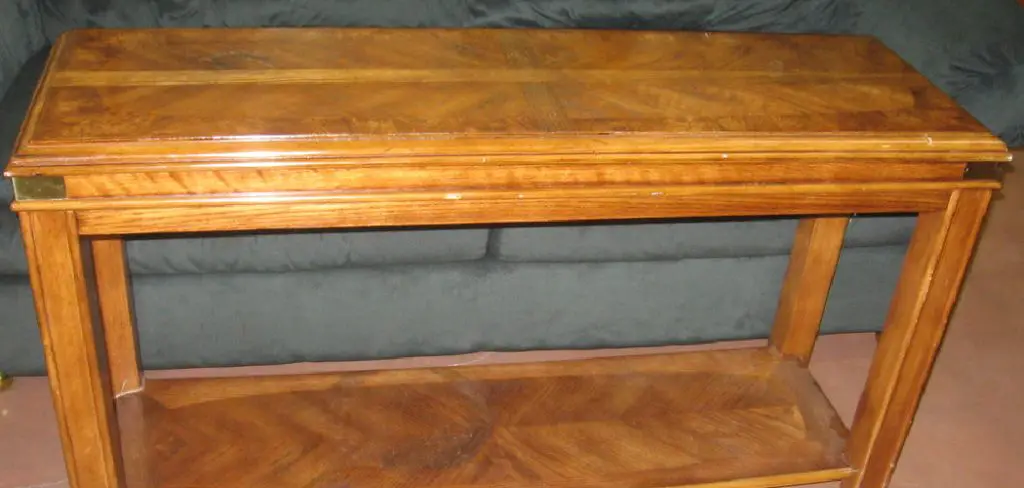
In this guide on how to build a sofa table, we will walk you through each step of the process, ensuring you have the knowledge and confidence to create a beautiful and practical piece of furniture for your home.
Why Build Your Own Sofa Table?
There are several reasons why you may want to build your own sofa table instead of purchasing a pre-made one.
Firstly, building your own allows for customization. You can choose the size, shape, and design of your sofa table to perfectly fit your space and complement your existing decor.
Secondly, it can be more cost-effective to build a sofa table yourself rather than buying one from a store. With some basic woodworking skills and tools, you can create a high-quality piece at a fraction of the cost.
Lastly, building a sofa table can be a fun and fulfilling project that allows you to express your creativity and personal style while also learning new skills.
Materials Needed
Wood Boards:
Depending on the size of your table, you will need at least two long boards for the tabletop and two shorter ones for the legs. It is recommended to use a sturdy wood such as oak or maple.
Screws and Nails:
You will need screws or nails to assemble the table. It is important to choose the appropriate size and type for your specific wood boards.
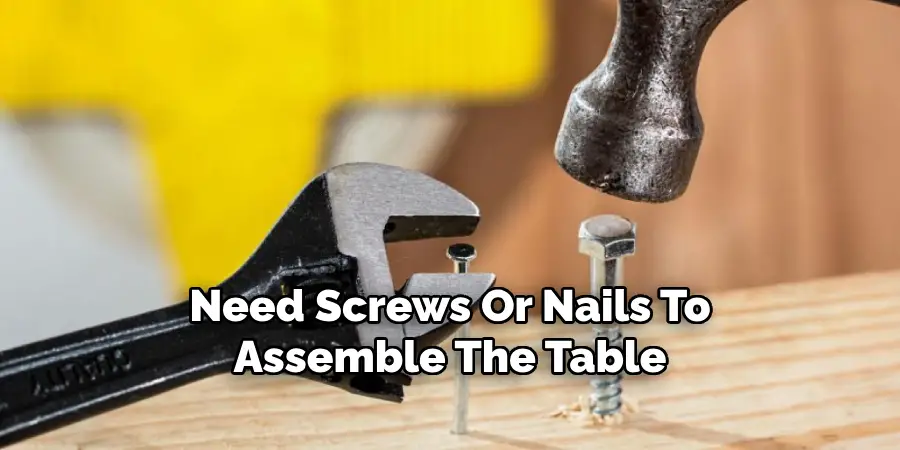
Wood Glue:
Wood glue is essential for creating a strong and durable joint between the boards.
Sandpaper:
To smooth out any rough edges or imperfections on the wood, you will need sandpaper of different grits.
Stain or Paint:
This step is optional, depending on your personal preference. You may choose to leave the wood natural or add a pop of color with stain or paint.
8 Step-by-step Guidelines on How to Build a Sofa Table
Step 1: Measure and Cut Your Boards
Begin by deciding the dimensions of your sofa table. Consider the height, width, and depth that will best suit your space and needs. A common width for sofa tables is around 14 to 18 inches, and the height is typically 30 inches, but you can adjust these measurements to fit your requirements. Once you have your dimensions, mark the exact measurements on your wood boards using a measuring tape and a pencil. Ensure your marks are accurate to guarantee a precise and even cut. Using a saw, carefully cut the wood following your marked lines.
If you’re using a hand saw, ensure that you keep steady pressure and follow along the line for a clean cut. If you have access to a power saw, such as a circular saw, it will make this process quicker and can provide cleaner edges. After cutting, use sandpaper to smooth the edges of each board, eliminating any splinters or rough facets. This step will prepare the boards for assembly and ensure a polished look for your finished table.
Step 2: Assemble the Tabletop
Place your two longboards horizontally on a flat surface parallel to each other. Then, place one short board vertically at each end of the long boards to create a rectangular frame. Use wood glue and nails or screws to attach the short boards to the longer ones. This will form the base of your tabletop. Next, take your remaining long board and lay it across the middle of the frame. Again, use wood glue and nails or screws to secure it in place.
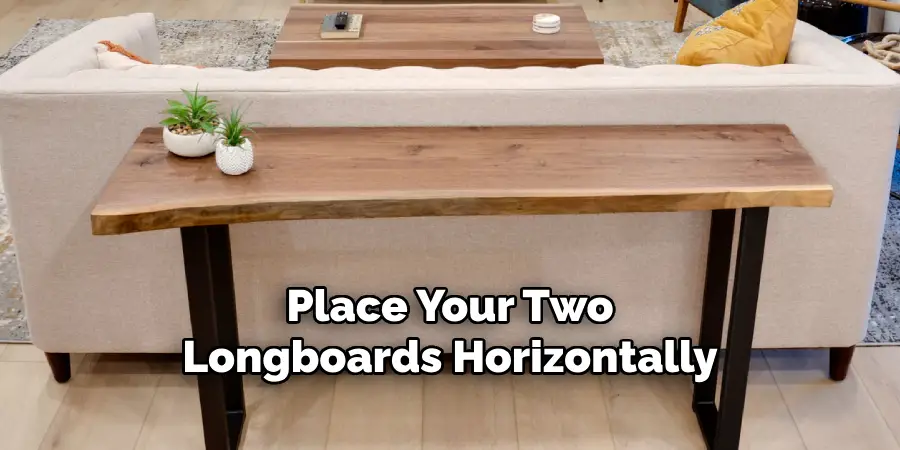
It is important to ensure the boards are aligned and that your tabletop sits flat on the legs. Use clamps to hold the boards in place while the glue dries.
Step 3: Build the Legs
Using your remaining short boards, attach them vertically to each corner of the tabletop frame using wood glue and screws or nails. Make sure they are securely attached for stability. If you want a more intricate design, you can use additional short boards or decorative brackets to add detail to your table legs.
But, if you prefer a simpler design, the four legs will provide enough support for your sofa table.
Step 4: Add Support Beams
To add extra support and stability to your sofa table, cut two more longboards to fit between the legs. Attach them horizontally with wood glue and nails or screws at the bottom of the tabletop frame, close to the floor. This step will prevent any wobbling or sagging in your table and ensure a sturdy base.
But, if you prefer a more open design, you can skip this step and have the tabletop supported by the four legs only.
Step 5: Sand and Stain or Paint
Using sandpaper of different grits, sand down your entire table to achieve a smooth and even finish. Once satisfied with the surface, wipe off any dust or debris before proceeding to stain or paint your sofa table. You can choose to leave the wood natural for a rustic look or use a stain for a richer color. If you prefer a pop of color, consider using paint in a shade that complements your existing decor.
Follow the instructions on your chosen product for best results. Allow ample drying time before moving on to the next step.
Step 6: Add Finishing Touches
Once your stain or paint has dried, you can add any additional details to personalize your sofa table. This could include adding decorative hardware like drawer pulls or knobs, attaching a shelf underneath for extra storage or applying a clear coat of polyurethane for added durability and shine.
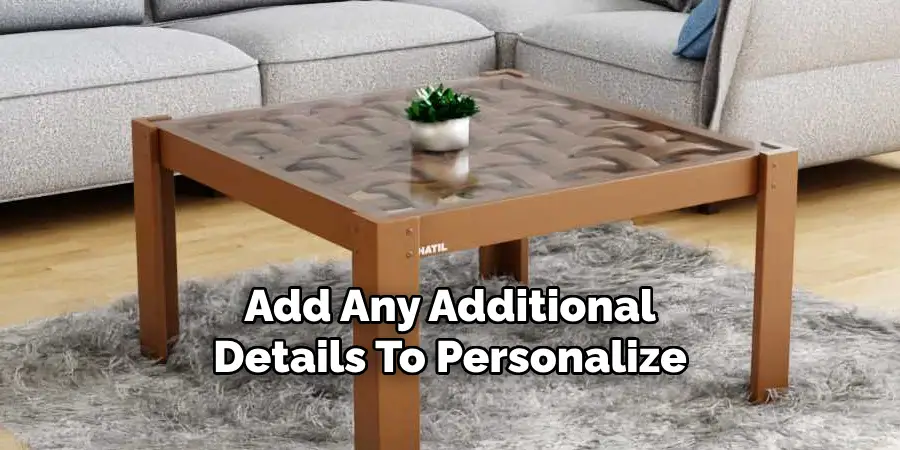
If you choose to add a shelf, make sure to measure and cut the wood accordingly and attach it using wood glue and screws or nails.
Step 7: Secure the Tabletop
To ensure your sofa table stays in place against your couch, consider attaching it to the wall. Use brackets or L-shaped braces to secure the back of the tabletop to the wall behind your sofa. This step will prevent any accidental tipping or sliding of the table.
The type of brackets or braces you use will depend on the design and weight of your table, so choose accordingly.
Step 8: Enjoy Your New Sofa Table
Once everything is in place, step back and admire your handmade sofa table. You can now decorate it with books, plants, candles, or any other decorative items that suit your style. This piece will not only add function to your living space but also be a beautiful statement piece that you can proudly say you built yourself.
With these guidelines on how to build a sofa table and some patience and determination, you can create a custom sofa table that perfectly fits your needs while showcasing your woodworking skills. Have fun with it and make it your own! Happy building!
Do You Need to Use Professionals?
While building a sofa table can be a rewarding DIY project, there are times when enlisting the help of professionals might be beneficial. If you lack the necessary tools or experience with woodworking, hiring a professional can ensure a polished and durable finish. Professionals bring expertise, precision, and efficiency to the project, potentially saving you time and resources. Additionally, if you desire a more complex design or specialized materials, a professional’s skills in design and customization can be invaluable.
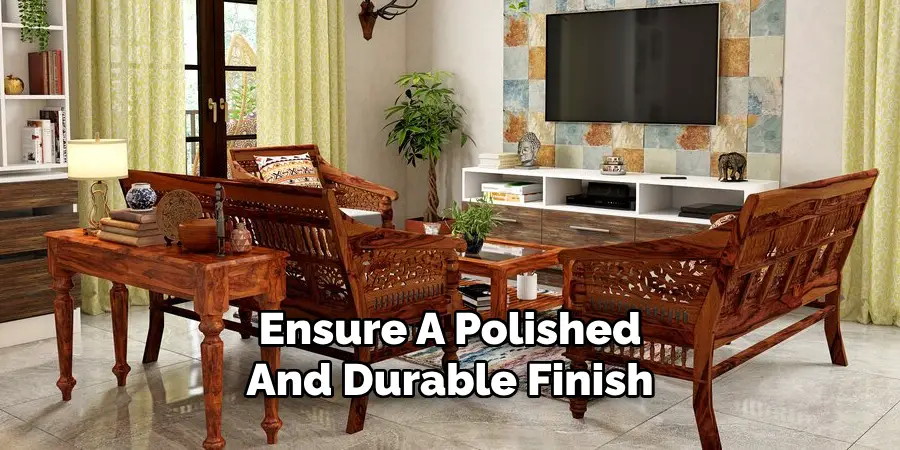
Consider the scope of your project, your own skill level, and the desired outcome before deciding whether to proceed on your own or to hire a professional.
Frequently Asked Questions
Q1: Can I Use Different Types of Wood for My Sofa Table?
A: Yes, you can choose any type of wood that fits your budget and desired aesthetic. Just make sure the wood is sturdy enough to support the weight of items placed on top of the table. You may also want to consider the wood’s durability and resistance to scratches or stains.
Q2: Can I Customize the Dimensions of My Sofa Table?
A: Absolutely! These instructions provide a general guide, but you can adjust the measurements and proportions according to your preferences. Just make sure all the pieces are symmetrical for stability and balance.
Q3: Can I Add Drawers to My Sofa Table?
A: Yes, you can add drawers if you have the necessary tools and skills. The process involves building a frame for each drawer, attaching drawer slides for smooth opening and closing, and securing them to the tabletop frame. It may require additional time and effort, but it can add functionality to your sofa table.
Q4: What Other Types of Tables Can I Build Using These Instructions?
A: These instructions can be applied to build various types of tables, such as coffee tables, end tables, or even dining tables. You can adjust the dimensions and design according to your needs and preferences. Just make sure to use appropriate materials for the weight and function of the specific table you want to create.
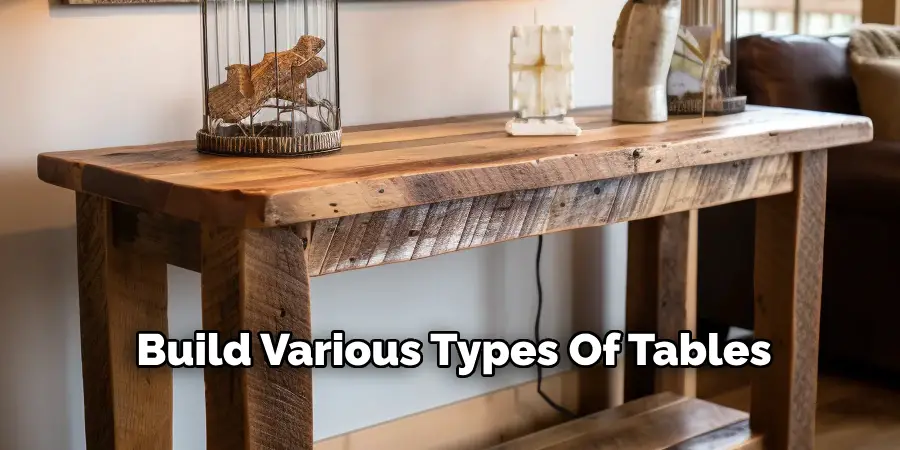
Conclusion
Building a sofa table from scratch can be a rewarding and fulfilling project that enhances both your living space and your woodworking expertise. By following each step on how to build a sofa table carefully, from measuring and cutting the boards to applying the finishing touches, you ensure a sturdy, custom-made piece that aligns perfectly with your style and needs. Whether you opt for a natural wood finish or a vibrant pop of color, your handmade sofa table will serve as a functional and aesthetic addition to your home.
The sense of accomplishment that comes from creating something with your own hands adds immeasurable value to your living environment, making it a truly personalized piece. Remember, every step is a learning process, so take your time and enjoy the journey of crafting a unique piece that you can cherish and share with guests. Happy building!
you can also check it out Decorate Office Space

